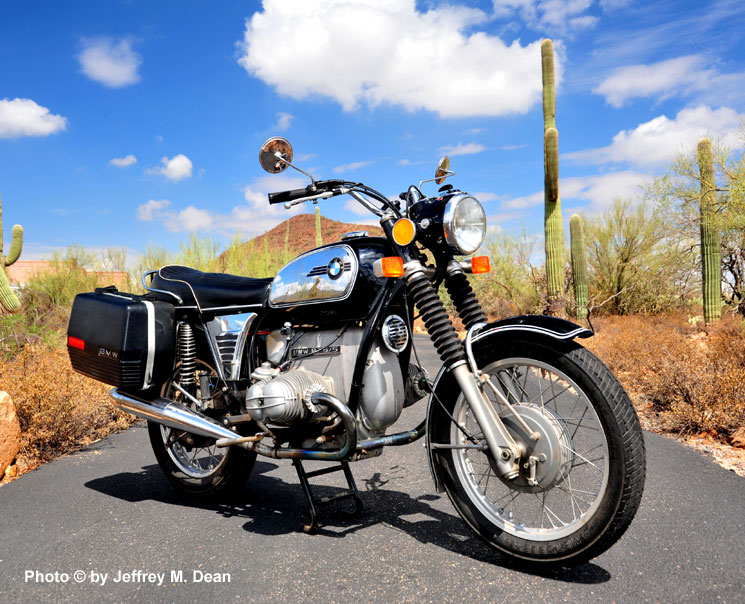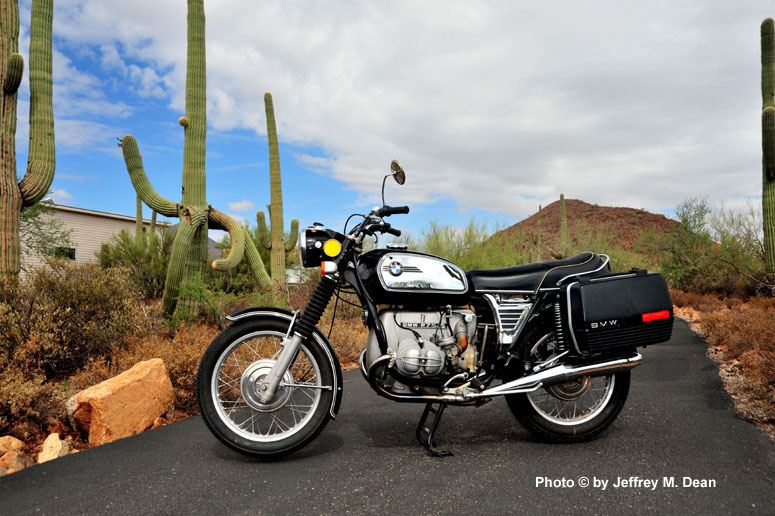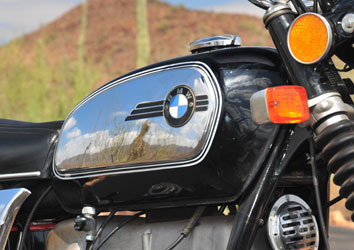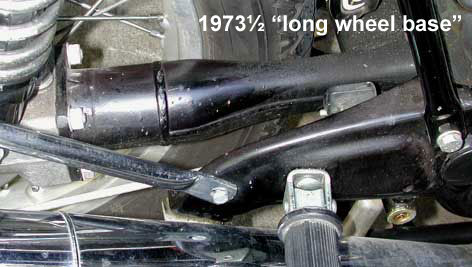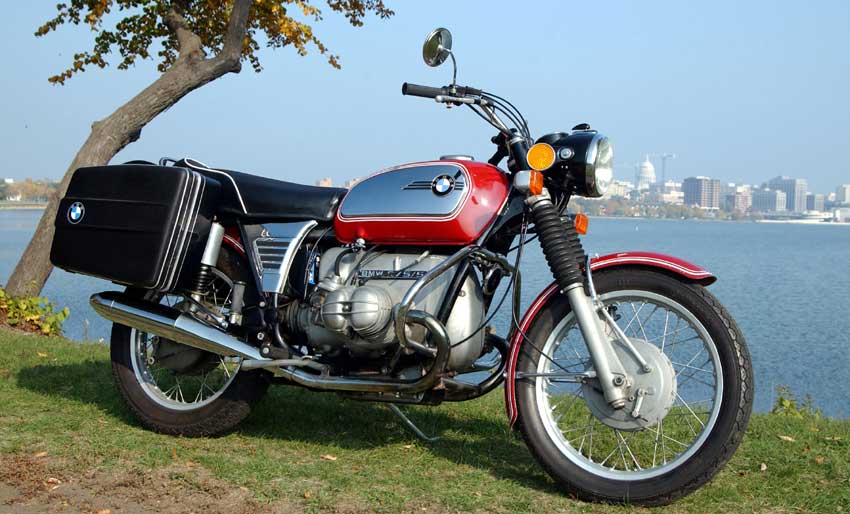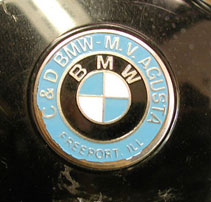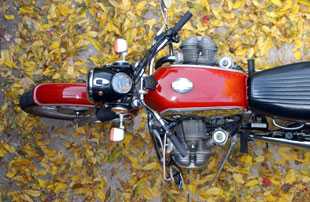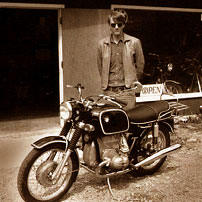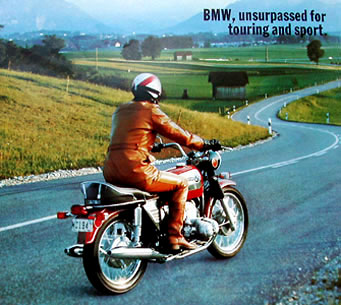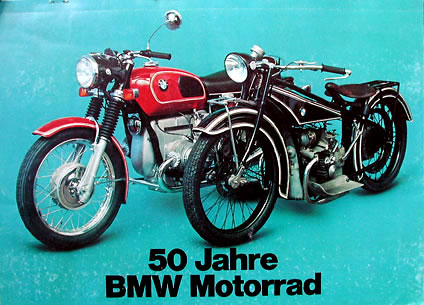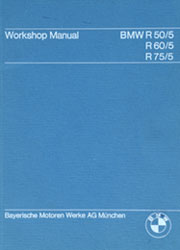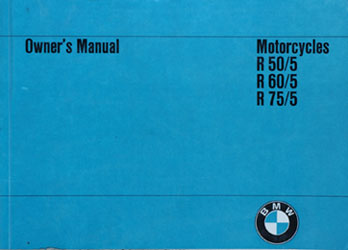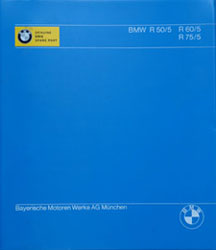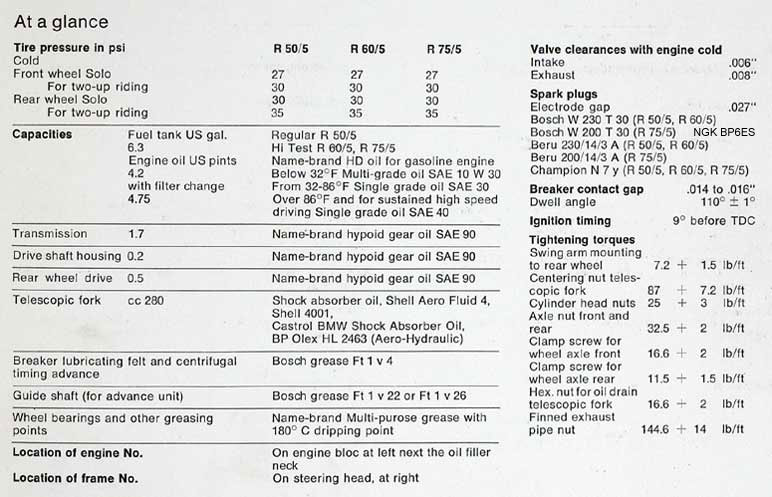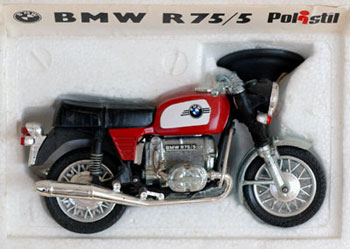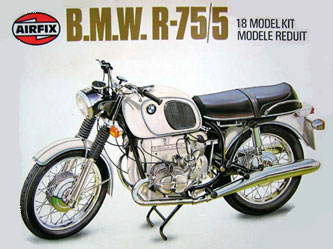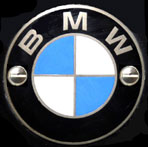
|
|
750cc 1973½ R75/5
— the “Toaster”by Jeff Dean
|
|
|
|
|
Here, above, is a BMW 1973½ R75/5 LWB (long wheel base) model with the so-called “toaster” gasoline tank.
Below is the same R75/5 — the Krauser style saddlebags that are commonly used on these bikes.
For the 1970 model year, BMW entered the age of modern motorcycles with three new models having engine capacities of 500cc (R50/5), 600cc (R60/5), and at the top of the line 750cc (R75/5). It stopped production of the last “Slash-2” models, with their Earles forks, kick starters, 6-volt electrical systems, woeful brakes, and frames that descended from prewar BMWs (but bikes that still evoke nostalgic passion in some of us). The new, “Slash-5” series of BMWs offered 12 volts, electrical starters(!) as well as the retained kick starter, telescopic forks, and improved brakes. BMW also introduced nonmetallic fenders and taillight housings for the first time.
Model year 1972 saw the introduction of the 4-gallon “toaster” tank with chrome side panels, so named because of its resemblance to a kitchen toaster . For the second half of the 1973 model year, BMW lengthened the rear swingarms, resulting in that is known now as the “long wheel base” 1973½ “LWB” models (read a July 1973 Cycle World road test here). For these reasons, and its 750cc power, the 1973½ R75/5 is one of the most desireable of the “slash-5” models — although some enthusiasts prefer the 1970 models because they were the first “slash-5s.”
Click on the photo above to see R75/5 specifications.
In 1974, BMW introduced the “Slash-6” models, which offered numerous improvements, most notably disk front brakes, more and better instrumentation, and a five-speed transmission. The fabled “toaster” tank, however, was consigned to the dust bins of history.
C&D BMW-M.V. Augusta, Freeport, Illinois (photo of logo on friction damper below, left), originally sold the black R75/5 shown in the photo at the top of this page. Unfortunately, it went out of business long ago. Frank Stevens, C&D co-owner with Bill Fleming when this bike was originally sold, now is in charge of authority sales for BMW of North America, New Jersey.
I always liked the way BMW cylinders project sideways (center photo, above), like stubby airplane wings. Not only is the view pretty for the rider, this layout improves head cooling by some 100° Fahrenheit compared to air-cooled V-twins. Click on above photo above, center, for more info on the R75/5.
In 1971, at the tender age of 31, I purchased my first R75/5 (right photo, above). Here I am, much skinnier than
today, picking it up at the BMW dealer.
Above: There are two versions of mirrors for the “slash-5.” The long mirror, shown on the left, and the short mirror, on the right. The long mirror was intended for low European bars, and the short mirror was intended for high U.S. bars. One “slash-5” rider suggested installing the long mirror on the left of U.S. bars because it gives a better view to the rear and vibrates at different frequencies than the short mirror. This way, one mirror should provide a clear image at all times. Grasping the logic of that argument, I ordered a long left mirror and installed it. Not only was his assessment correct, but I discovered that the long mirror (BMW part no. 51-16-1-230-420) gives a steadier image all the time. Therefore, I have resolved to keep my R75/5 equipped assymmetrically—the way you see it in this photo.
Above, left, is an illustration in the 1972 BMW motorcycles brochure, showing a red U.S.-spec R75/5. Above, right, is the cover of the 1973 50th anniversary BMW motorcycle calendar from BMW AG. Note the granada red, 1973½ European-spec (no side reflectors, low handlebars) R75/5 located behind the R32.
A few riders, such as Mark Weiss, of Chandler, Arizona, even race their R75/5s. Click on the photo to read Mark's story.
| 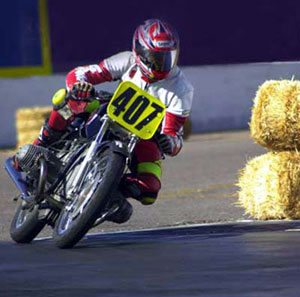 |
Below are the covers of the three main manuals associated with the “slash-5” series. Left is the Workshop Manual (8½" by 11½", 310 pages). Center is the Owner's Manual (8¼" by 6", 80 pages). Right, in a four-ring plastic notebook binder, is the Parts Catalogue (11" by 12¾").
To read an internet version of the “slash-5” Owner's Manual, click here or on the owner's manual cover illustrated below.
Below is the “At a glance” page of basic maintenance data found on the inside of the back cover of the 1970 Owner's Manual.
“slash-5” Paint Codes
Glasurit is the original brand of paint used the /5:
Black (schwarz)
Silver (polaris)
Metallic silver (early)
Red (granada)
Metallic gold (curry)
Metallic monza blue
Federweiss (white)
Metallic green
Polizei grun |
Glasurit code #086
Glasurit code #060
Glasurit code #057
Glasurit code #023
Glasurit code #029
Glasurit code #538
Glasurit code #084
Glasurit code #074
Glasurit code #067
|
Touch-up paint part numbers:
Schwarz (black)
Granada red
Federweiss (white)
Polaris silver
|
Spray Paints
51 91 1 825 475
51 91 1 825 460
51 91 1 828 511
51 91 1 851 637 | |
Touch-up stick
51 91 1 813 070
n/a
51 91 1 232 144
51 91 1 851 625
|
|
Finally, the R75/5 even made it into the world of diecast and kit models. The photo below shows a diecast by Polistil. The right photo shows a British Airfix R75/5 kit.
Hier klicken, um Wikipedias deutsche Seite R75/5 zu lesen
Click here to read English R75/5 specifications from BMW A.G., Munich, Germany.
Slash-5 Technical Data
|

